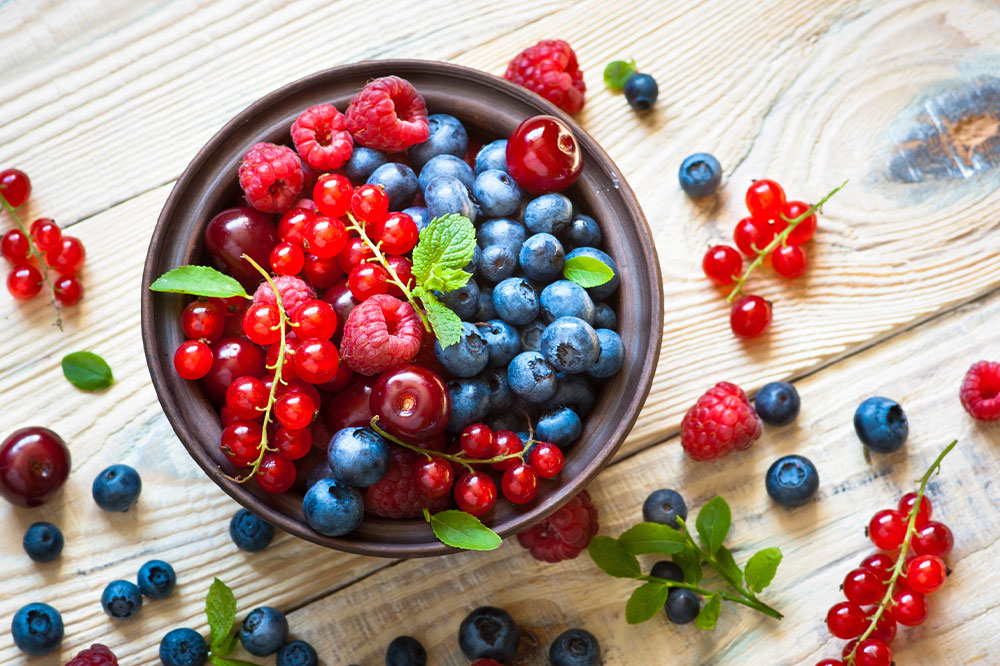12 foods that can worsen bone weakening and osteoporosis

Maintaining the body’s structure is not the only function of our bones; they are also vital reservoirs of nutrients and protectors of body organs. Osteoporosis is a health condition characterized by weakened bones due to loss of bone density and mass. The disease increases one’s susceptibility to fractures and considerably limits mobility. Typically diagnosed through a bone density scan, osteoporosis can be remedied through timely treatment and lifestyle changes. Here’s a list of foods patients with osteoporosis must avoid:
Soft drinks
Soft drinks are loaded with sugar, which significantly increases glucose levels in the blood and causes calcium and vitamin D deficiencies in the body. Consequently, bones become weaker with time, leading to an increased risk of osteoporosis. Therefore, it is best to avoid soft drinks and replace them with fresh fruit juices, smoothies, etc.
Fries
A medium serving of French fries contains approximately 260 grams of sodium. The excessive sodium content results from the extremely high quantities of salt added to these munchies, which can increase blood pressure levels. Such elevated blood pressure can cause calcium levels to deplete and culminate in osteoporosis. It is a good idea to replace fries and other high-salt snacks with nutritious munchies like unsalted nuts and dried fruits.
Caffeine
According to research findings, one loses about 6 mg of calcium for every 100 mg of caffeine. Several studies have found links between caffeine intake and reduced bone mass, leading to an increased risk of fractures. Although limited intake of caffeinated beverages may be permissible, it is essential to avoid their overconsumption to reduce one’s risk of osteoporosis.
Red meat
Although protein accounts for 50% of bone density and is crucial for bone health, excessive quantities of protein in the body can be detrimental to bone health. Red meat is among the most common sources of protein and it also contains high levels of sulfur-rich amino acids, which can deplete the bones of calcium and cause bone brittleness. Thus, patients with osteoporosis should reduce red meat intake.
Mangoes
Vitamin A is a crucial nutrient for the body and can help with maintaining strong and healthy bones. However, excessive levels of vitamin A (i.e., more than 10,000 IU a day) can cause low bone density and lead to fractures. Mango is one of the richest fruit sources of vitamin A; thus, excessive intake of mangoes can lead to surplus vitamin A in the body and cause bone-related problems. Although mangoes are rightly referred to as the “king of fruits” and should not be totally avoided, individuals with osteoporosis should have mangoes in limited portions.
Beans
Beans contain high levels of phytate, a substance that can reduce calcium absorption in the body and contribute to weak bones. However, beans are rich in fiber, magnesium, and other essential nutrients besides being good sources of protein. Thus, it helps to reduce one’s intake of beans, including kidney beans, garbanzo beans, and lentils, to reduce one’s risk of osteoporosis.
Rhubarb
These plants with red, fleshy stalks are not only visually appealing but also highly nutritious. However, they contain high levels of oxalate, which can impede calcium absorption. Individuals with osteoporosis or weak bones should limit the inclusion of rhubarb – particularly rhubarb leaves – in their meal plans.
Beef liver
Beef liver is among the best animal sources of vitamin A, besides being a great source of protein. One serving of beef liver offers over 100% of the daily vitamin A requirement. Excessive vitamin A in the body can lead to reduced bone mass. Therefore, it is best to limit one’s beef liver intake to restore or maintain bone health and prevent the onset of osteoporosis. One should also limit the intake of other types of liver, including pork liver and calf liver.
Processed foods
Excessive intake of processed foods, like processed meats, burgers, pizzas, and hot dogs, can deplete calcium levels significantly, increasing one’s vulnerability to osteopenia and osteoporosis. It is best to avoid processed foods and replace them with healthy fats and complex carbohydrate sources.
Nightshade vegetables
Nightshade vegetables include mushrooms, tomatoes, peppers, and eggplant and can cause inflammation in the body, contributing to the onset of osteoporosis. However, these nightshade vegetables are also excellent sources of several essential nutrients; therefore, they should not be totally avoided but only limited.
Hydrogenated oils
Hydrogenated oils are prepared by chemically altering the components of vegetable oils using hydrogen. This process eliminates vitamin K, an essential nutrient for bone health. It is advisable to purchase non-hydrogenated vegetable oils for one’s daily cooking purposes.
Readymade breakfast cereals
Packaged breakfast cereals available in supermarkets are loaded with sugar, which can reduce the body’s ability to absorb calcium from milk and contribute to bone deterioration. These cereals should be replaced with healthier breakfast alternatives like rolled oats and boiled eggs.
Besides avoiding certain types of foods, individuals with osteoporosis must incorporate foods rich in calcium, including dairy and dairy products (if one is not lactose intolerant), leafy greens, salmon, tuna, and figs, into one’s meal plans. Vitamin D is essential for effective calcium absorption; hence, foods like egg yolks, mushrooms, sardines, and mackerel, should also be a significant part of one’s daily meals.
Staying physically active is also essential for bone health and strength. Strength training exercises like weight lifting, as well as aerobics and cardio exercises, can help with strong bones and the prevention of osteoporosis. Weight-bearing exercises should be an integral part of one’s workout sessions. In addition, staying hydrated allows minerals to be transported adequately to the cells, which can boost bone health considerably and release toxic, inflammation-causing substances. Thus, having sufficient water throughout the day is crucial for bone health. One may also include other fluids like soups, smoothies, fresh fruit juices, and milk (or soy milk, almond milk, etc.) to stay hydrated.


